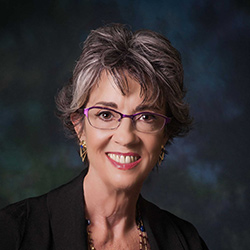By Robyn Stone
Can community health workers help older adults age successfully in affordable senior housing?
Back in the 1950s, a band of so-called “barefoot doctors” began traveling the backroads of China to bring health care to remote, rural communities.
The barefoot doctors weren’t actually doctors at all. They were farmers, folk healers, and secondary school graduates who used their very basic medical education to serve people who had been largely ignored by the urban medical establishment.
These rural health care workers lived in the communities they served—many continued to farm the land. Their patients viewed them as peers and, as a result, were much more willing to accept their health-related advice.
The barefoot doctors weren’t the first example of the peer-to-peer health delivery model we now know as the community health worker (CHW) model. Nor were they the last.
Health officials in South Africa actually led the world in implementing the CHW model in the late 1920s. Many countries around the world, including the United States, followed in the footsteps of these pioneers: an estimated 120,000 CHWs were working in the U.S. by 2007.
CHWs come from the communities they serve. They work within those communities to connect their neighbors with culturally competent, health-related services. In the U.S., they typically serve individuals and families who do not speak English fluently, or whose cultures make it difficult for them to feel comfortable with Western health care.
A new case study from the LeadingAge LTSS Center @UMass Boston suggests an additional role for CHWs: helping older adults age in community.
The case study details a program developed by Mount Rubidoux Manor, a California-based affordable senior housing community operated by HumanGood, and Inland Empire Health Plan (IEHP), a nonprofit, Medicaid-supported health entity. Through the program, a CHW employed by IEHP provides case management services to Mount Rubidoux Manor residents and helps them understand and access their health benefits. The CHW also develops group programming to help residents address factors that may be impacting their health.
The HumanGood/IEHP model impresses me for two reasons.
First, it works. IEHP documented general improvement in how Mount Rubidoux residents rated their physical, mental, and social health during the program’s first 13 months.
Second, the model suggests that CHWs could play a prominent role in programs using affordable senior housing as a platform for delivering services and supports to older adults.
The LTSS Center has been studying these housing plus services models for more than a decade. One promising model, tested during the federal iWISH demonstration, features an on-site team consisting of a service coordinator and a wellness nurse. The team provides older residents of senior housing with health coaching and education while also linking program participants with community-based services designed to help them remain healthy and independent.
I’m intrigued by the role CHWs might play in this model. Health workers who live in the same community and share the same background as older housing residents could expand and enhance the on-site team in so many ways. They could converse with residents in their native language—a key to engaging older adults in their own health. CHWs could also build trust and gain acceptance by presenting health information and service options in a culturally sensitive way.
We have many questions to answer before we can welcome CHWs to housing-based teams. They include:
- How would CHWs work with service coordinators and wellness nurses? Could CHWs carry out tasks service coordinators can’t do or don’t have time to do? Could they assist wellness nurses by helping residents understand how to better manage their chronic conditions? Might CHWs free those nurses to address higher-level needs that are more specific to their licensing and education?
- How would CHW training need to change? CHWs working with older adults will need special training. But what should that training look like? What do CHWs need to know about special heath issues affecting older people? How can we prepare CHWs to help elders age successfully in community?
- How would the CHW position be supported? We’ll need to investigate whether the growing interest in CHWs among Medicare, Medicaid, managed care, and other health entities will translate into adequate, sustainable funding for these workers. If it does, we’ll need to make a strong case for using some of that funding to support CHWs in senior housing.
As an applied research organization, the LTSS Center is eager to begin working with our partners to ask—and answer—these and other questions so we can inform practice and policy. We’ll keep you posted on our progress.

Robyn I. Stone, DrPH, is senior vice president of research at LeadingAge, and co-director of the LeadingAge LTSS Center @UMass Boston. Her widely published work addresses long-term care policy and quality, chronic care for people with disabilities, the aging services workforce, affordable senior housing, and family caregiving.
